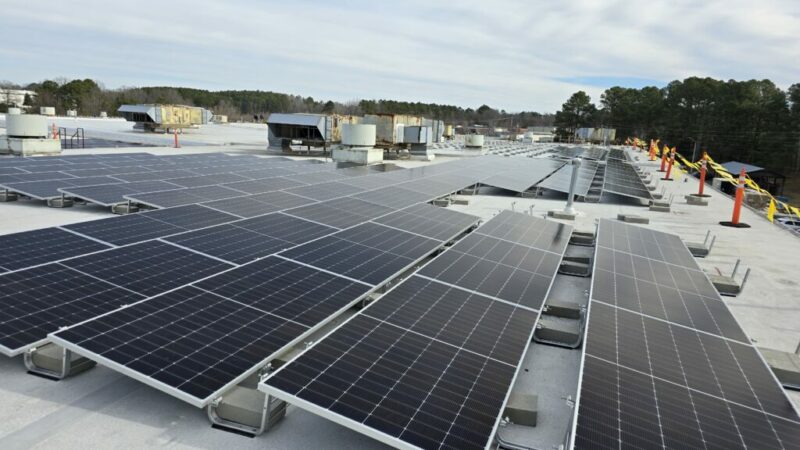Tariff Developments: What RVIA Members Need To Know – RVBusiness – Breaking RV Industry News

EDITOR’S NOTE: The following is a News & Insights report by the RV Industry Association (RVIA).
President Donald Trump has signed three Executive Orders (EO) implementing new tariffs, effective on Tuesday, Feb. 4. The tariffs target imports from Canada, Mexico, and China, and are aimed to address concerns over illegal immigration and fentanyl trafficking.
The tariffs announced were issued under the International Emergency Economic Powers Act (IEEPA), reflecting a significant shift in U.S. trade and national security policy. IEEPA, enacted in 1977, provides the president with extensive powers to address national emergencies—but has never been used to impose tariffs.
Specifically, President Trump is imposing a 25% tariff on goods from Mexico and Canada, as well as an additional 10% tariff on goods from China. The Trump administration has implemented these tariffs as a punitive measure in response to the illegal fentanyl sourced from these countries and distributed into the United States and, in the case of Mexico, illegal immigration.
The new tariffs target all products from Canada and Mexico, with 25% tariff applied to all products except energy resources from Canada. Canadian goods related to energy or energy resources will be subject to a 10% tariff. The term “energy resources” was defined in a past Executive Order as “crude oil, natural gas, lease condensates, natural gas liquids, refined petroleum products, uranium, coal, biofuels, geothermal heat, hydropower and critical minerals.”
The Executive Orders also include a retaliation clause, establishing that President Trump may choose to increase or expand the scope of the duties should any country retaliate against the United States with its own tariff action. Both Mexico and Canada have vowed to respond aggressively to these actions. Mexico’s President Claudia Sheinbaum wrote a letter in response to President Trump’s threats, suggesting that Mexico will impose retaliatory tariffs and recently said that Mexico is prepared in the event the tariffs are imposed. Canadian Prime Minister Justin Trudeau spoke with provincial premiers on the Canada–U.S. relationship and promised a “purposeful, forceful, but reasonable, immediate response.” In fact, Canada is already moving forward with retaliatory tariffs as described below.
Important implementation details include the following:
- The newly imposed tariffs will go into effect through modifications to the Harmonized Tariff Schedule (HTSUS), which is expected prior to February 4, 2025 –the effective date of the tariffs.
- The tariff actions will not apply to goods that are currently in transit. Specifically, goods “loaded onto a vessel at the port of loading or in transit on the final mode of transport prior to entry into the United States before 12:01 a.m. Eastern time on February 1, 2025” are exempt from the tariff actions.
- There is no set end date for the new tariff actions. The official fact sheet specifically states that the actions “will remain in effect until such time as Drugs, in particular Fentanyl, and all Illegal Aliens stop this Invasion of our Country.”
- At this time, there is no mechanism announced for any exceptions or exclusion process.
- Imports cannot benefit from duty-free treatment under U.S. de minimis rules ($800 in value) or duty drawback.
- U.S. Foreign trade zones must admit impacted merchandise as “privileged foreign status” unless eligible for “domestic status.”
The tariffs will take effect Tuesday, February 4 at 12:01 a.m. EST, but goods entered for consumption, or withdrawn from warehouse for consumption, after such time that were loaded onto a vessel at the port of loading or in transit on the final mode of transport prior to entry into the United States before 12:01 a.m. EST on February 1 will not be impacted. U.S. Foreign trade zones must admit impacted merchandise as “privileged foreign status” unless eligible for “domestic status.”
Because the action was taken under IEEPA, they apply at ad valorem rate and are owed in addition to normal duties and any applicable Section 201, 232, and 301 duties or antidumping/countervailing tariffs. The new tariffs also apply to USMCA-qualifying merchandise as well as products eligible for specific product exclusions.
Retaliatory Tariffs
Canada
Following the EOs, Canada announced on February 1 that it will move forward with a 25% tariff on $155 billion worth of goods. The response will take place in phases.
- Phase 1: The initial phase targets $30 billion in goods imported from the United States, effective February 4. The list includes products such as orange juice, peanut butter, wine, spirits, beer, coffee, appliances, apparel, footwear, motorcycles, cosmetics, pulp, and paper. A full list will be made available “shortly.”
- Phase 2: Canadian Minister of Finance and Intergovernmental Affairs Dominic LeBlanc announced that the Canadian government intends to impose tariffs on an additional list of imported U.S. goods worth $125 billion. A full list of these goods will be made available for a 21-day public comment period prior to implementation. This list includes products such as passenger vehicles and trucks, including electric vehicles, steel and aluminum products, certain fruits and vegetables, aerospace products, beef, pork, dairy, trucks and buses, recreational vehicles, and recreational boats.
The Canadian government has reiterated that all options remain on the table as they consider additional measures, including non-tariff options.
China
As of this writing, the Chinese Ministry of Commerce has not mentioned retaliatory tariffs or other specific measures, but said it would file a lawsuit with the World Trade Organization and enact “necessary countermeasures.”
Mexico
Mexican President Claudia Sheinbaum also ordered retaliatory tariffs on Saturday in response to the EOs. As of this writing the details have not been announced, but President Sheinbaum posted to X to say that while they are seeking dialogue rather than confrontation, Mexico will respond in kind.
She went on to instruct her economy minister to “implement the plan B” they have been developing, which includes tariff and non-tariff measures “in defense of Mexico’s interests.” The post did not specify what U.S. goods her government will target.
What’s Next?
The RV Industry Association is closely monitoring these developments and advocating for trade policies that support our industry. The Government Affairs team has been communicating with the Office of the United States Trade Representative and members of the RV Caucus.
We encourage RV Industry Association members to stay informed and engaged as discussions unfold. We will continue to provide updates as more details emerge.
The official White House fact sheet is available here. Please contact Samantha Rocci, Director of Federal Affairs, at [email protected] with any questions.






